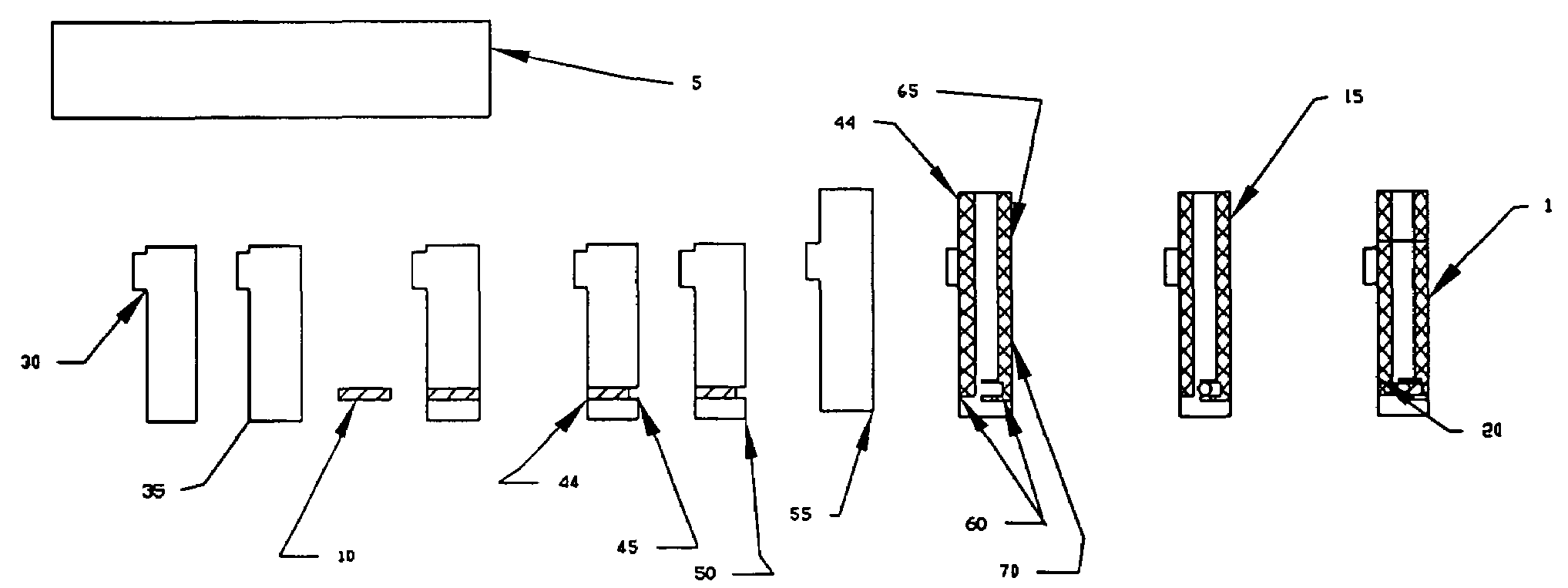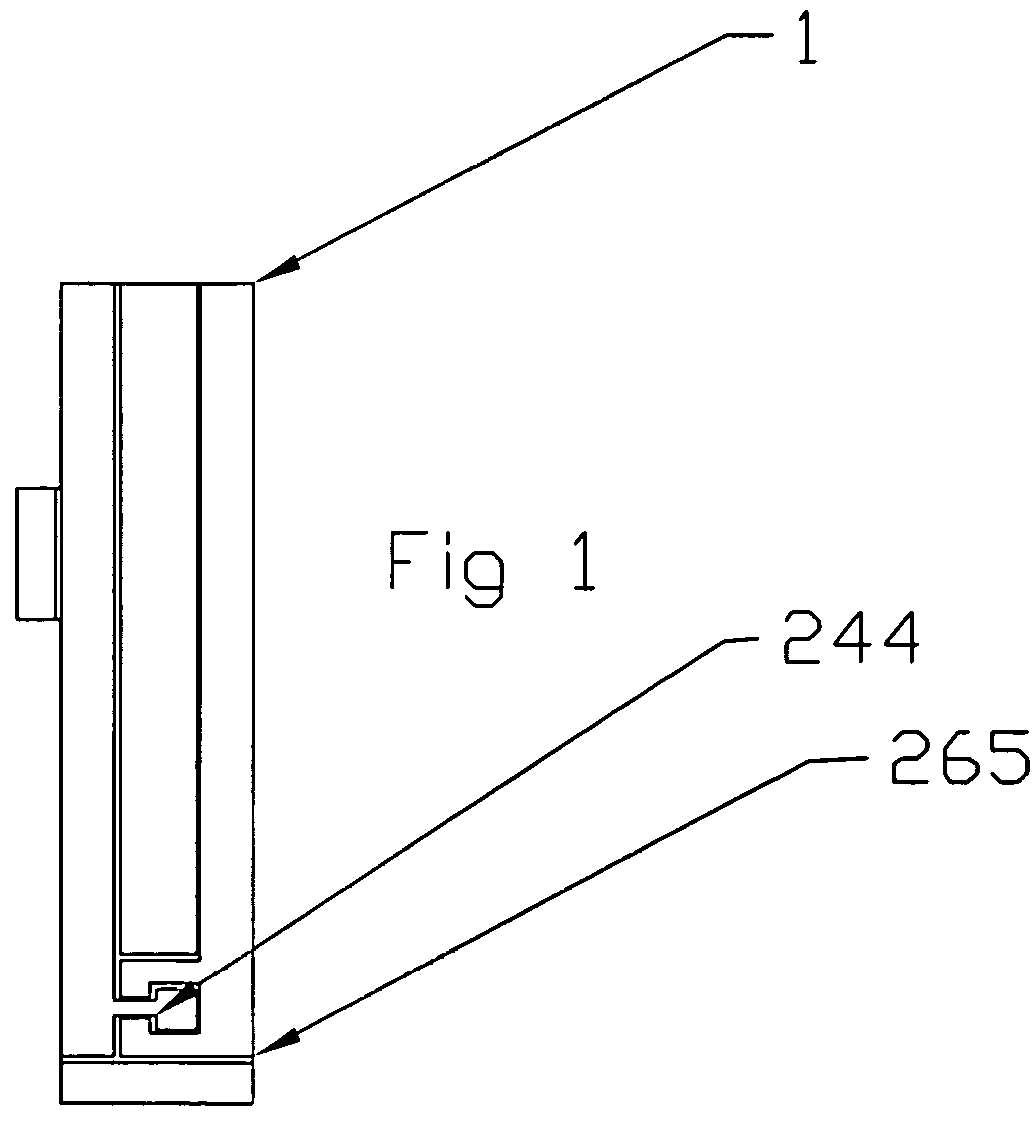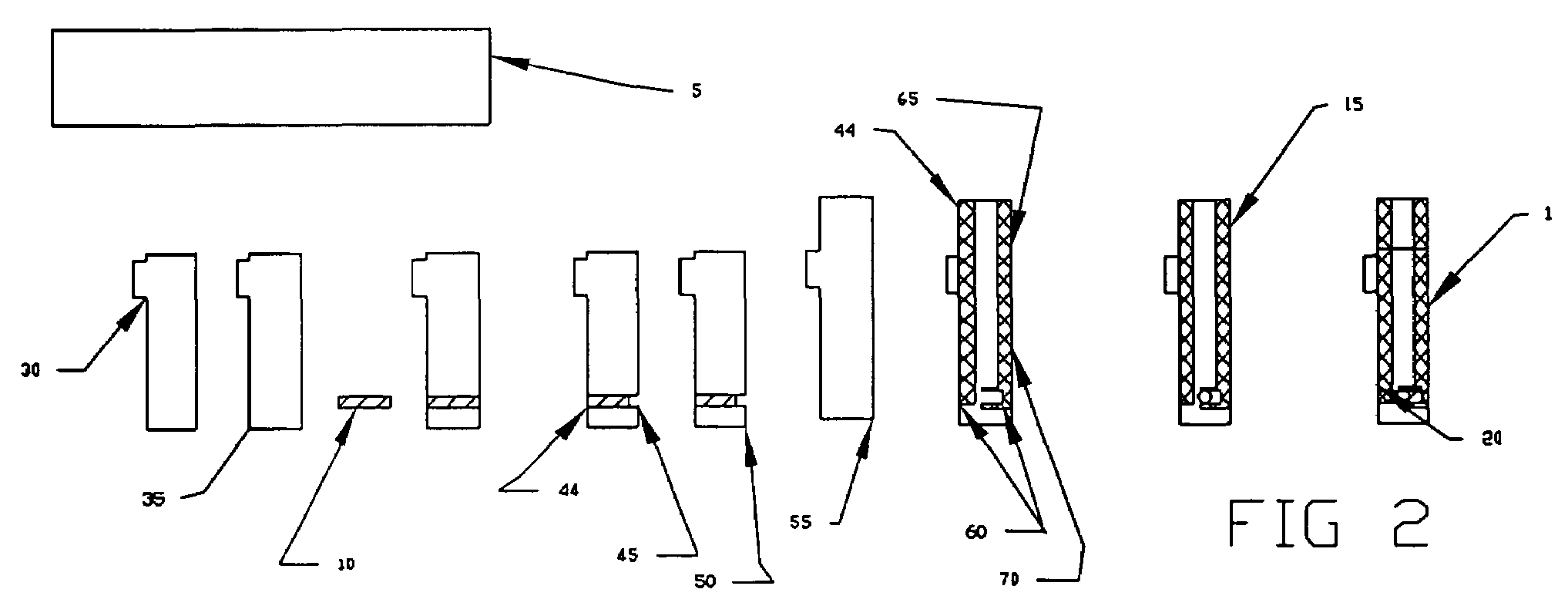Strip electrode with conductive nano tube printing
a technology of carbon nanotubes and strips, applied in the direction of diaphragms, immobilised enzymes, cells, etc., can solve the problems of electronic chemical reaction differences between strips, and achieve the effects of less manufacturing costs, accurate electronic readout of target compounds, and more consistent surface area
- Summary
- Abstract
- Description
- Claims
- Application Information
AI Technical Summary
Benefits of technology
Problems solved by technology
Method used
Image
Examples
Embodiment Construction
[0037]Electrode Structure
[0038]In general, the strip electrode of the invention comprises a conductive electrode coated with a mixture of conductive carbon nanotubes or dispersion made from carbon nanotubes / antimony tin oxide, carbon nanotubes / platinum, or carbon nanotubes / silver or carbon nanotubes / silver-cloride, formed by coating the substrate with a conductive carbon nanotube solution similar to that found in conductive coatings such as described in U.S. patent application Ser. No. 2002 / 0143094, Polymer Nanocomposites and Methods of Preparation, to Conroy et al., U.S. patent application Ser. No. 2002 / 0035170, Electromagnetic Shielding Composite Comprising Nanotubes, to Glatkowski et al., U.S. patent application Ser. No. 2002 / 0180077, Carbon Nanotube Fiber-Reinforced Composite Structures for EM and Lightning Strike Protection, to Glatkowski et al., U.S. patent application Ser. No. 2003 / 0008123, Nanocomposite Dielectrics, to Glatkowski et al., U.S. patent application Ser. No. 2003...
PUM
| Property | Measurement | Unit |
|---|---|---|
| outer diameter size | aaaaa | aaaaa |
| outer diameter | aaaaa | aaaaa |
| outer diameter | aaaaa | aaaaa |
Abstract
Description
Claims
Application Information
 Login to View More
Login to View More - R&D
- Intellectual Property
- Life Sciences
- Materials
- Tech Scout
- Unparalleled Data Quality
- Higher Quality Content
- 60% Fewer Hallucinations
Browse by: Latest US Patents, China's latest patents, Technical Efficacy Thesaurus, Application Domain, Technology Topic, Popular Technical Reports.
© 2025 PatSnap. All rights reserved.Legal|Privacy policy|Modern Slavery Act Transparency Statement|Sitemap|About US| Contact US: help@patsnap.com



